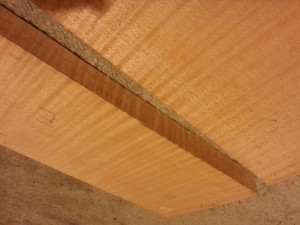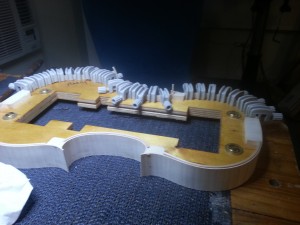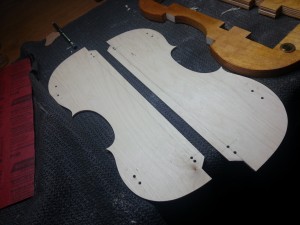 I’ve never had a relationship with wood before. Don’t get me wrong. I love wood. I knock on it for luck, hug a tree in the wilderness, admire a lovely piece of furniture, but I haven’t loved it like a wood worker loves it. There is a specialty wood store in town and my husband took me there as if it was a field trip. He stood in front of the wood displays as if they were pieces of art. I stood next to him and nodded my appreciation, but I didn’t see what he saw. I didn’t understand. But now I have an inkling. Textiles, clay, paint, words, have been the tools of my creative expression. Wood, not so much. Wood existed in nature, and wood existed in ready made furniture. When unfinished furniture stores became popular I first realized that the wood needed to be stained or painted, that it didn’t come that way out of the tree, kind of like discovering that chocolate milk doesn’t come from chocolate cows.
I’ve never had a relationship with wood before. Don’t get me wrong. I love wood. I knock on it for luck, hug a tree in the wilderness, admire a lovely piece of furniture, but I haven’t loved it like a wood worker loves it. There is a specialty wood store in town and my husband took me there as if it was a field trip. He stood in front of the wood displays as if they were pieces of art. I stood next to him and nodded my appreciation, but I didn’t see what he saw. I didn’t understand. But now I have an inkling. Textiles, clay, paint, words, have been the tools of my creative expression. Wood, not so much. Wood existed in nature, and wood existed in ready made furniture. When unfinished furniture stores became popular I first realized that the wood needed to be stained or painted, that it didn’t come that way out of the tree, kind of like discovering that chocolate milk doesn’t come from chocolate cows.
Picking the wood was a whole process in itself. I found the maple I wanted to use with no problem. But the top, the spruce was more difficult. So many factors. Do I want bright or do I want sweet and warm? Is the grain straight all the way through? I had narrowed my choice down to two, but one of the pieces was still in its wedge form, it hadn’t been cut yet, so I couldn’t hear it ring. The other one, had a nice tone when I tapped on it, but I was drawn to the grain on the thick one and I wanted to hear it sing. I spent almost an hour and we had to put it aside and wait. Brian will cut it so that I can hear the ring. Not that that really means anything, there is so much more, but I want to hear the ring and then I’ll know.
So we cut the one piece that was still in the wedge and still I couldn’t choose. I held the wood as I was shown and tapped on it. It rang. The wood sang. I tapped on the other piece. It too sang. A different sound, but still resonant. Which one would sound best with the bottom I had chosen. I couldn’t decide. I couldn’t see into the future. Which one. Eeny meeny minty mo. In the end it was the feel of the wood as I gouged a piece of it. Brian said, “which one do you want to work with. So I went for the one that carved in a way that felt comfortable to me. Not right or wrong or better, just good for me. It’s so interesting, this subjective choosing. I wanted Brian to make the choice for me, “which would you choose?” I asked, but he wouldn’t tell me. “They’re both good.”
And still, with all this planning and theorizing about what the wood will end up sounding like, no one knows. It is truly like the birth of a child. I hold the wood up to the light and try to see the future. But I can’t. So much can go wrong. I could end up with a pretty lump of varnished wood that has no sound, no soul. Or I could end up with something sublime.


